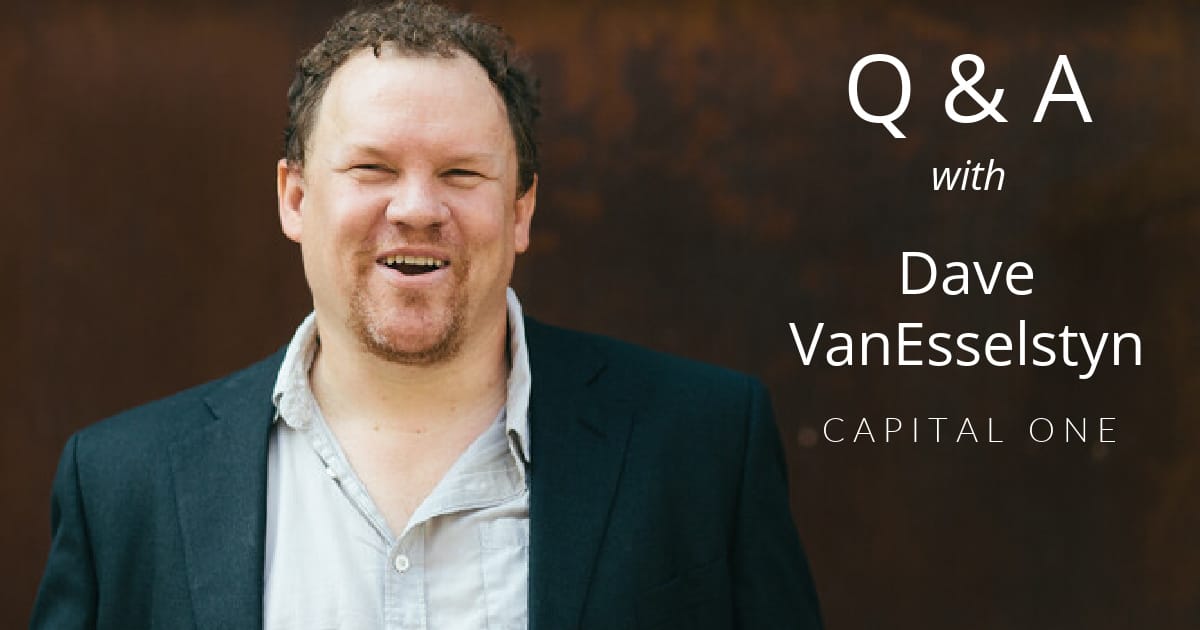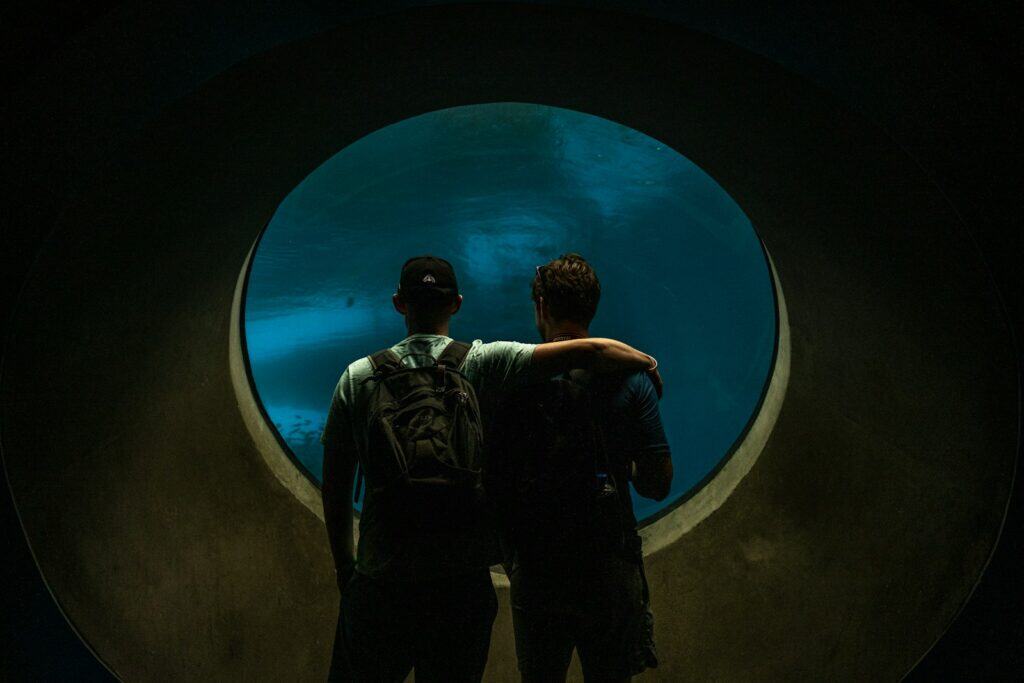When you lead with story, growth and change will follow. Storytelling training is the core of what we do at Narativ and our method is designed to provide leaders with the tools to uncover their own unique values, vision, and purpose—all of which are foundational to the creation of any leadership story.
Personal storytelling is an integral part of our method and we felt the best way to illustrate the transformative impact of storytelling training would be to interview a client. This gives you a unique perspective into why leading with story is an approach worth exploring.
We spoke to Dave VanEsselstyn, Head of Experience Insights at Capital One, about his takeaways from the training and how the Narativ method has impacted his approach to the work he does with both colleagues and clients.
What led you to Narativ’s storytelling training in the first place?
Dave VanEsselstyn: About 10 years ago I was at a conference and one presenter really stood out. He was different because he jumped right into telling a story with no prelude or setup, grabbing everyone’s attention right away. He had a bit of charisma, but he was also employing a really good technique. After the story, he went on to talk about what he was doing with his company, but he had won everyone’s attention right from the get-go.
I followed up after the conference, and he mentioned he had gotten that particular technique from doing professional development with Narativ. I made a note of it because I was so taken by his approach.
Years later, I had an opportunity to propose doing professional development around storytelling in my own role. The timing was right and Narativ seemed like the fit.
What insights have you personally implemented?
DVE: My takeaways focused on actual storytelling. Two of the things I’ve tried to employ are (1) starting presentations with a story and (2) a focused emphasis on the opening and closing sentences of what I’m sharing.
These insights have been very meaningful for me because I’m a user experience researcher, and to be successful at that you need to be a storyteller. You’re telling other people’s stories; you’re telling the experience of the folks you’re researching who may have a specific need we may not be meeting.
I have a quote I wrote down from my sessions with Jerome that says “When I can empathize with someone who has a problem, I’m more engaged in the solution.” This has stuck with me as I’ve gathered and shared the stories of our users. The simple truth is that by using storytelling, I’ve found it much easier to build empathy for them as I’m helping others within the organization make business decisions based on users’ experiences.
Storytelling tropes—or the common storytelling plot structures, themes, and storylines—have also been very helpful in telling the stories of our users and presenting the insights we’ve uncovered to our stakeholders.
What were your most impactful takeaways?
DVE: I would say that number one is the listening emphasis. It seems natural now, but I remember Jerome using the metaphor of a glass and water to illustrate how listening and story just go together. We need the “glass” of listening to hold our story together and help everyone get the most out of it.
If we take the metaphor one step further, no matter how good the story is, if you’re not telling it in a context where people are set up to listen—if you don’t have the glass—then the impact will be nullified, or at least muted.
When you’re telling the story, it’s not just a normal part of a presentation, it’s really something special. Your brain actually works differently when you’re listening to a story. I think it’s critical to realize you’re having such an impact on your listeners, and it makes you recognize that storytelling is a special tool—one not often employed in business.
I’ve been to other storytelling workshops in the past, but I’ve found that most of the stories I’ve heard in a business context were really only at those workshops. Until now. Now, I have the tools to use the power of story in my own work as well.
What changes and benefits have you seen as a result of the storytelling training?
DVE: One thing I’ve noticed is the community that has formed from the experience among my colleagues and I. I feel we really bonded in our appreciation of certain aspects of the workshop. There’s been a small community that’s built up around good listening practices and the power of stories.
Another thing I’ve seen is when faced with a presentation or an opportunity to tell a story, I now have a bag of tricks. I have some overall context around starting strong and following a defined story arc, as well as a solid technique of starting with the beginning and leaving with a powerful end. This just gives me more confidence to employ storytelling more often.
Where have you seen the greatest impact in your work?
DVE: It really returns to that quote I wrote down: “When I can empathize with someone who has a problem, I’m more engaged in the solution.”
In my area of work, there’s a lot of emphasis on good interviewing techniques, good ethnography techniques, and good ways to format those findings. But there’s really not much emphasis on how to tell stories about the gathered information in an impactful way that will build empathy, provide direction, or help others recognize truths to work on.
Being able to combine these effective user research techniques with the empathy naturally built through storytelling gets at the core of business. With this approach, we’re better able to see what the company needs to do to understand their users and their clients and then how to act appropriately.
If you can tell a good story it helps people come together and have a unified common experience. I think that’s extremely powerful in business.
Would you recommend this experience as training to other executives?
DVE: Yes, very much! I can still picture in my mind’s eye the person at the conference on that stage and everybody around me—how rapt everyone was, really on the edge of their seats. Now, 10 years later, actually experiencing the training and gaining insight on how to do that for myself, I frankly can’t think of a better tool that’s been added to my tool belt in the last couple of years.
My confidence in my storytelling and listening has grown, and I’m seeing the results within my work as well.
Thank you Dave for sharing your experience and insights from your storytelling training experience. If you want to learn more about how to leverage Narativ’s storytelling training for your business, you’re welcome to schedule a free 15-minute call with Jerome.




